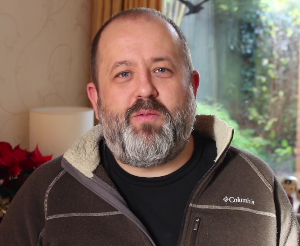Mar 16 2017
It’s impossible for most people to feel unmoved by images of dolphins, birds, and other marine life entangled in fishing nets, but it’s a tragedy that happens all the time. Bycatch, the term used for the problem of additional wildlife getting caught in nets meant for fish, is responsible for the deaths of hundreds of thousands of whales, dolphins, turtles and other endangered animals every year – and that’s not taking into account the creatures that are harmed by discarded fishing nets and fishing line.
 David Falconer (Credit: 3D Print)
David Falconer (Credit: 3D Print)
While bycatch is a complex problem that environmental organizations and fishing industries are trying to address, the risks posed by discarded fishing nets are easier to mitigate – at least that’s what Fishy Filaments believes. The UK startup was founded by some environmentally conscious individuals who want to provide local fisheries with a safe, sustainable way to recycle their old or unusable fishing nets – by turning them into 3D printer filament, of course.
Ian Falconer, the founder of Fishy Filaments, believes that fishing nets are ideal for recycling into filament because they’re largely made of one material: Nylon 6, already used in 3D printing. It doesn’t require a lot of additional processing to be turned into printing material, so there’s no negative impact on the environment due to chemicals, excessive energy usage, etc.
Fishy Filaments is based in Cornwall, which has a large fishing industry, and it’s being built as a local business, but one that has the potential to have a positive impact on the rest of the world.
“The increase in plastic wastes found in the marine environment is a global phenomenon that manifests itself on a local scale,” the company states. “Whether they are microbeads washed into the sea from their use in cosmetics, fishing nets snagged on the seabed or even a tragic outcome of a tsunami, the issue of plastics in our shared oceans is rising on environmental, economic and political agendas. The Fishy Filaments™ business model doesn’t pretend to address all these issues. Our aim is to provide a win-win solution to fishing communities by taking end-of-life fishing gear and plastics caught during normal fishing activities and producing a commercially viable product that has the potential for a multitude of uses.”
First and foremost, the business wants to reduce the plastic fishing waste produced locally, but if they’re successful, they hope to possibly sell the filament they produce nationally or even globally. Of course, it’s not easy to get a small business off the ground, so Fishy Filaments is currently running a crowdfunding campaign in an attempt to raise £5,000 by March 29. The campaign is just under halfway to the goal at this time.
The company has already been working with local fisheries and has demonstrated the ability to turn harborside gill nets into 3D printable form – a world first, according to Fishy Filaments. Now it’s all about scaling up the operation, conducting an advanced feasibility study, and creating pieces for demonstration. The £5,000 will go towards machinery for more advanced production. They’ve proven that the process works, the company says; now they just need to prove that they can build a business on it.
We’ve seen other organizations use 3D printing to reduce the amount of plastic waste in the oceans, and I think it’s wonderful. I remember having a “Save the Whales” sticker when I was younger, but I didn’t have a clue how one actually went about saving whales. Fishy Filaments may not be able to save all of the whales, but it looks like they certainly have the right idea when it comes to saving as much marine life as possible. Check out the crowdfunding video below: